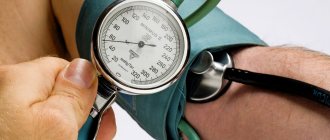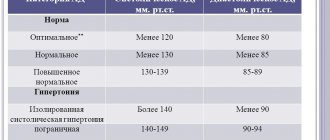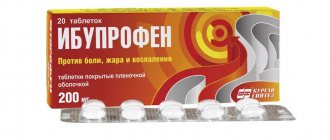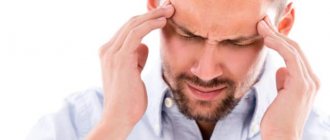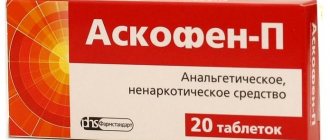What is blood pressure
Even the immortal hero of Petrov and Ilf Ostap Suleiman Bertha Maria Bender-Zadunaisky subtly noted that “every citizen is pressed by a column of air with a force of 214 kilos.” To prevent this scientific and medical fact from crushing a person, atmospheric pressure is balanced by blood pressure. It is most significant in large arteries, where it is called arterial. The blood pressure level determines the volume of blood ejected by the heart per minute and the width of the vascular lumen, that is, resistance to blood flow.
- When the heart contracts (systole), blood is pushed into the large arteries under pressure called systolic. Popularly it is called the upper one. This value is determined by the strength and frequency of heart contractions and vascular resistance.
- The pressure in the arteries at the moment of cardiac relaxation (diastole) gives an indicator of the lower (diastolic) pressure. This is the minimum pressure, completely dependent on vascular resistance.
- If you subtract diastolic blood pressure from systolic blood pressure, you get pulse pressure.
Blood pressure (pulse, upper and lower) is measured in millimeters of mercury.
Measuring instruments
The very first devices for measuring pressure were the “bloody” devices of Stephen Gales, in which a needle attached to a tube with a scale was inserted into the vessel. The Italian Riva-Rocci put an end to the bloodshed by proposing to attach a mercury monometer to a cuff placed on the shoulder.
Nikolai Sergeevich Korotkov in 1905 proposed attaching a mercury monometer to a cuff placed on the shoulder and listening to the pressure with the ear. Air was pumped out of the cuff with a bulb, the vessels were compressed. Then the air slowly returned to the cuff, and the pressure on the vessels weakened. Using a stethoscope, pulse tones were heard on the vessels of the elbow. The first beats indicated the level of systolic blood pressure, the last – diastolic.
Modern monometers are electronic devices that allow you to do without a stethoscope and record blood pressure and pulse rate.
How to measure blood pressure correctly
Normal blood pressure is a parameter that changes depending on a person’s activity. For example, with physical activity or emotional stress, blood pressure increases, but with sudden standing up it can fall. Therefore, to obtain reliable blood pressure parameters, it must be measured in the morning, without getting out of bed. In this case, the tonometer should be located at the level of the patient’s heart. The arm with the cuff should lie horizontally at the same level.
There is such a known phenomenon as “white coat hypertension”, when a patient, despite treatment, persistently shows an increase in blood pressure in the presence of a doctor. Also, blood pressure can be raised slightly by running up the stairs or straining the muscles of the legs and thighs during measurement. To have a more detailed understanding of a given person’s blood pressure level, the doctor may recommend keeping a diary where the pressure is recorded at different times of the day. They also use the 24-hour monitoring method, when using a device attached to the patient, pressure is recorded for a day or more.
Why is low blood pressure dangerous?
Low heart pressure varies in severity, and all possible consequences for the human body depend on it. The lower the blood pressure, the slower the blood flows to other organs, and as a result, they receive oxygen and other nutrients with a delay. The brain and heart muscle of a person suffer the most from such a deficiency.
When blood flow to the central nervous system deteriorates, frequent dizziness, sudden falls and dangerous injuries are observed. Therefore, we can say that hypotension is a common root cause of fractures, concussions and other serious injuries. Hypotension is also a prerequisite for decreased performance, deterioration of well-being and a significant change in the patient’s quality of life for the worse.
Return to contents
Blood pressure in adults
Since different people have their own physiological characteristics, fluctuations in blood pressure levels may differ from person to person.
There is no concept of age-related blood pressure norms in adults. In healthy people at any age, pressure should not exceed the threshold of 140 to 90 mmHg. Normal blood pressure readings are 130 to 80 mmHg. The optimal numbers “like an astronaut” are 120 to 70.
Upper pressure limits
Today, the upper limit of pressure, after which a diagnosis of arterial hypertension is made, is 140 to 90 mmHg. Higher numbers are subject to identification of their causes and treatment.
- First, a lifestyle change, smoking cessation, and feasible physical activity are practiced.
- When the pressure rises to 160 to 90, drug correction begins.
- If there are complications of arterial hypertension or concomitant pathologies (coronary artery disease, diabetes mellitus), drug treatment begins at lower levels.
During the treatment of arterial hypertension, the normal blood pressure that they are trying to achieve is 140-135 at 65-90 mmHg. In people with severe atherosclerosis, the pressure is reduced more smoothly and gradually, fearing a sharp decrease in blood pressure due to the threat of a stroke or heart attack. For kidney pathologies, diabetes and those under 60, the target numbers are 120-130 per 85.
Lower pressure limits
The lower limits of blood pressure in healthy people are 110 per 65 mmHg. At lower numbers, the blood supply to organs and tissues (primarily the brain, which is sensitive to oxygen starvation) deteriorates.
But some people live their whole lives with a blood pressure of 90 over 60 and feel great. Former athletes with hypertrophied heart muscle are prone to low blood pressure. For older people, it is undesirable to have too low blood pressure due to the risks of brain accidents. Diastolic pressure for those over 50 should be kept between 85-89 mmHg.
Pressure on both arms
The pressure on both hands should be the same or the difference should not exceed 5 mm. Due to the asymmetrical development of muscles on the right hand, the pressure is usually higher. A difference of 10 mm indicates probable atherosclerosis, and 15-20 mm indicates stenosis of large vessels or anomalies of their development.
Pulse pressure
Black rectangles are pulse pressure in different parts of the heart and large vessels.
Normal pulse pressure is 35+-10 mmHg. (up to 35 years 25-40 mmHg, at older ages up to 50 mmHg). A decrease in it can be caused by a decrease in the contractility of the heart (infarction, tamponade, paroxysmal tachycardia, atrial fibrillation) or a sharp jump in vascular resistance (for example, during shock).
High (more than 60) pulse pressure reflects atherosclerotic changes in the arteries and heart failure. It can occur with endocarditis, in pregnant women, against the background of anemia, intracardiac blockade.
Experts do not use simple subtraction of diastolic pressure from systolic pressure; the variability of a person’s pulse pressure has a greater diagnostic value and should be within 10 percent.
What to do if the pressure is 100 to 60
A hypotonic attack is manifested by a sharp deterioration in well-being: the pulse rises, a headache begins, and nausea and vomiting are possible.
The person turns pale and may sweat profusely. Don't panic. Lay the patient on a flat surface, there is no need to put a pillow under the head, it is advisable to raise the legs above the level of the head to ensure normal blood supply to the brain. If a pressure of 100 to 60 does not cause any discomfort, taking steps to normalize it is not only undesirable, but also dangerous. But if a hypotensive person experiences discomfort (pain, weakness or palpitations) directly related to low blood pressure, he can try to correct the functioning of the vascular system.
First of all, he needs to see a doctor to undergo an examination and eliminate the risk of having a disease that causes hypotension. If a somatic pathology is detected, its elimination or compensation will most likely have a beneficial effect on blood pressure.
For a person without physical pathologies, the program for treating hypotension is no different from the rules of a healthy lifestyle. Nevertheless, simple recommendations can increase the tone of the body, improve its adaptive capabilities, and, therefore, normalize blood pressure.
- The diet of a hypotensive patient should be balanced, complete, and sufficiently high in calories. If you feel unwell due to low blood pressure in the morning, it is recommended to drink coffee or eat something sweet right in bed. It is useful to include tea or coffee in the breakfast menu.
- In order for the body to have the ability to regulate the functioning of all its systems, it must have a sufficient amount of energy, and for this you need to get enough sleep. If hypotension is affecting a person's quality of life, they should try to increase their sleep time, for example by resting 20-30 minutes in bed during the day.
- General asthenia rarely allows a hypotensive person to play sports, but it is necessary to devote a little time to physical activity every day. Regular walking at a comfortable pace, swimming, five-minute exercises - these simple techniques have a beneficial effect on the functioning of the cardiovascular system.
If the described methods of normalizing blood pressure are not effective, you can resort to drug treatment. To increase pressure the following are used:
- adaptogens: ginseng extract, eleutherococcus, lemongrass;
- CNS stimulants: caffeine, nootropics (Piracetam, Cerebrolysin);
- adrenergic agonists: norepinephrine (Norepinephrine Agetan), fethanol.
You can take medications only after consultation with a doctor and examination. Medicines that increase blood pressure can cause strong heart palpitations and are therefore potentially dangerous.
It all depends on the symptoms that accompany the condition and its type. Primary hypotension is an independent disease and is associated with low activity of the nerve centers that regulate blood pressure. Secondary is a symptom of brain injuries and tumors, mental disorders, disorders of the heart and endocrine system.
You can live peacefully with a physiological form that is not felt by a person. With a pathological variety, the cause of the condition is first determined, and then some action is taken to eliminate it. In case of convulsions, vomiting, confusion, arrhythmic pulse, shortness of breath, chest pain, you must call an ambulance. A pressure of 100 over 60 may be a harbinger of more severe conditions: stomach ulcers, pulmonary tuberculosis, pathologies of the liver, endocrine glands.
Some food products have a mild effect. If the pressure remains at the same level, help:
- Citramon is a popular caffeine-containing tablet that relieves pain caused by decreased tone of blood vessels. They have a number of contraindications that must be taken into account when taking them.
- Cerebrolysin is a drug used for the diagnosis of “vegetative dystonia of a hypotonic nature.”
- Tanakan is a herbal preparation. Improves blood fluidity, normalizes blood circulation, and prevents thrombus formation.
- Saparal is a composition used to prevent fatigue. Indicated for diagnoses of hypotension, neurasthenia, depressive and asthenic conditions. Not recommended for use in the evening.
- Nootropin is a medicine that improves blood supply to brain cells, stabilizing the emotional and intellectual spheres.
Home methods
Many hypotensive people have a question: “what to do if the pressure is 100 to 60.” It is important not to get carried away with tonic compounds to avoid increased heart rate and increased blood pressure. It is necessary to try to identify the factors that provoke hypotension and eliminate them from your life.
Natural coffee, tea, tinctures of Eleutherococcus, Rhodiola rosea, Schisandra, ginseng, and Leuzea safflower have a moderately positive effect, although there is no direct evidence of their effectiveness.
In order to prevent a dangerous condition, it is advisable to:
- Get out of bed slowly, avoid stuffy rooms and heat.
- Follow a work-rest schedule, walk in the fresh air every day, and sleep at least 8 hours a day.
- Train the vascular bed under the supervision of a specialist.
- Increase the volume of water consumed to 2.5 liters, and salt to 10 g per day.
- Dishes can be seasoned with ginger, turmeric, cardamom, red and black pepper.
- Drink green tea, which improves the condition of blood vessels. There are fresh vegetables and fruits.
Restrictions should apply to carbohydrates, hot drinks and dishes. Alcohol is prohibited. Aggressive sports are not suitable for hypotensive people. It is better for them to do yoga, walking, swimming.
Blood pressure is a consequence of lifestyle. If desired, it can be corrected with proper nutrition, dosed physical activity, positive emotions and creativity.
Table of blood pressure norms
| men | women | |
| 20 years | 123 by 76 | 116 by 72 |
| 30 years | 126 by 79 | 120 by 75 |
| 40 years | 129 by 81 | 127 by 80 |
| 50 years | 135 to 83 | 135 by 84 |
| 60-65 years | 135 by 85 | 135 by 85 |
| Over 65 | 135 to 89 | 135 to 89 |
Blood pressure, the norm of which varies slightly by age, is reflected in the table above. Blood pressure is slightly lower in young women due to lower muscle mass. With age (after 60), the risks of vascular accidents are compared in men and women, so blood pressure levels are equalized in both sexes.
Should low blood pressure be treated?
You can fight low blood pressure only by changing your lifestyle: balance your diet, remove stress, exercise, start walking more, walk in the fresh air, swim, take a massage course. Only if there is no effect from non-drug therapy, use medications on the recommendation of a doctor.
You need to start with adaptogen preparations of plant origin: Leuzea, Eleutherococcus, Ginkgo biloba, Schisandra. If these medicinal plants turn out to be ineffective, more serious medications are added: Mexidol, Actovegin, Cerebrolysin, Vinpocetine, which are taken intravenously in courses of at least two weeks.
Oral medications are prescribed as maintenance therapy: Mexidol, Mildronate, Cinnarizine, Cavinton. At night - sedatives: Novo-Passit, Persen, Afobazol, Glycine, Eltacin - a month.
Blood pressure in pregnant women
In healthy pregnant women, blood pressure does not change until the sixth month of pregnancy. Blood pressure is normal in non-pregnant women.
Further, under the influence of hormones, some increases may be observed, not exceeding 10 mm from the norm. In a pathological pregnancy, gestosis may occur with surges in blood pressure, damage to the kidneys and brain (preeclampsia), or even the development of seizures (eclampsia). Pregnancy against the background of arterial hypertension can worsen the course of the disease and provoke hypertensive crises or a persistent increase in blood pressure. In this case, correction of drug therapy, observation by a therapist or treatment in a hospital is indicated.
Symptoms that require medical attention
List of warning signs:
- Blood pressure is 100/50 and a headache, especially intense, stabbing (we may be talking about a cerebral hemorrhage).
- Dizziness with darkening of the eyes.
- Fainting (actually syncope). Especially repetitive ones.
- General poor health, including weakness, drowsiness.
- Increase in body temperature to insignificant levels. Low-grade fever.
- Nausea.
- Vomiting, especially if it occurs several times.
Normal blood pressure in children
For a child, the higher his or her age, the higher the blood pressure. The level of blood pressure in children depends on the tone of blood vessels, the working conditions of the heart, the presence or absence of developmental defects, and the state of the nervous system. For a newborn, normal blood pressure is considered to be 80 to 50 millimeters of mercury.
What normal blood pressure corresponds to a particular childhood age can be seen from the table.
| Age | HELL | |
| From birth to 2 weeks | 60-96/40-50 | |
| 3-4 weeks | 80-112/40-74 | |
| 2 months – year | 90-112/50-74 | |
| 2-3 years | 100-112/60-74 | |
| 3-5 years | 100-116/60-76 | |
| 6-10 years | 100-122/60-78 |
How is hypotension treated?
The essence of treatment is to eliminate the root cause of hypotension, that is, the underlying disease that caused it. It is important to change your lifestyle, give up bad habits, optimize your diet (more spicy and salty foods) and your physical activity regimen.
Alcohol is also not the best companion for a patient with hypotension; it should be completely avoided.
- To increase the pressure itself, symptomatic use of caffeine-based tonics is necessary. These are drugs that directly increase cardiac blood output and arteriolar tone, which increases the tonometer readings to the desired level. Names: “Citramon”, “Askofen”, “Coffetamine”, “Ortho-taurine”, “Pyramein”, “Regulton”, “Saparal”. The maximum dose of caffeine per day for an adult is 0.1 g. Otherwise, tachycardia is possible (heartbeat acceleration to 90 or more beats per minute).
- From herbal tonics: tinctures of eleutherococcus, lemongrass, ginseng, aralia.
- To improve the supply of blood and oxygen to the brain, normalize memory and concentration, nootropic drugs are used. Among them: “Cavinton”, “Xanthinol nicotinate”, “Niceroglin”, “Nootropil”, “Picamilon”, “Tanakan”, “Phenibut”, “Cinnarizine”, “Encephabol”.
- Amino acids and proteins to support brain function: “Glycine”, “Citrulline”, “Cerebrolysis”. Vitamins A, E, B, to improve vascular tone in the body.
- To stimulate the nervous system with a persistent, prolonged fall in Hell, Midodrine or Gutron are prescribed.
The specific names of the drugs are selected only by the doctor, taking into account the diagnostic results and the individual characteristics of the body.
A blood pressure of 100/50 poses a health hazard. Complex treatment is required. Otherwise, complications should be expected.
Source
From the article you will learn what it means if the pressure is 100 over 50, is there any reason to worry, what pathologies and diseases can be hidden by tonometry numbers.
Causes of high blood pressure
- Essential arterial hypertension (hypertension, see medications for high blood pressure) causes persistent increases in pressure and hypertensive crises.
- Symptomatic hypertension (adrenal tumors, renal vascular diseases) gives a clinical picture similar to hypertension.
- Vegetative-vascular dystonia is characterized by episodes of blood pressure surges not exceeding 140 to 90, which are accompanied by vegetative symptoms.
- An isolated increase in lower pressure is inherent in renal pathologies (developmental anomalies, glomerulonephritis, atherosclerosis of the renal vessels or their stenosis). If diastolic pressure exceeds 105 mmHg. for more than two years, the risk of brain accidents increases by 10 times, and a heart attack by five times.
- Systolic pressure increases more often in older people, people with thyroid pathologies, patients with anemia and heart defects.
- An increase in pulse pressure is a serious risk of developing a heart attack or stroke.
Reasons for low blood pressure
Low blood pressure is called hypotension and its causes lie in weak heart function or peculiarities of autonomic vascular tone (see how to increase blood pressure). Blood pressure is persistently reduced with:
- myocardial infarction and subsequent cardiosclerosis,
- myocardiopathy,
- vegetative-vascular dystonia,
- against the background of anemia,
- prolonged fasting and weight loss,
- for hypothyroidism,
- adrenal insufficiency,
- diseases of the hypothalamic-pituitary system.
With slight hypotension, people live quite fully. When the upper blood pressure drops significantly, such as during shock, the lower blood pressure is also very low. This leads to centralization of blood circulation, multiple organ failure and the development of disseminated intravascular coagulation.
Thus, for a long and fulfilling life, a person should monitor his blood pressure and keep it within the physiological norm.
Author:
Postnova Maria Borisovna general practitioner
Symptoms of low blood pressure
The most common symptoms of low blood pressure are:
- Lethargy, drowsiness, fatigue, turning into exhaustion. Even small physical or mental work leads to fatigue, and rest and sleep do not bring relief;
- Headache; Headache with low blood pressure usually affects the temporal and occipital parts. The symptoms of headaches with low blood pressure are similar to migraines. The pain can be dull, monotonous or throbbing. Often accompanied by nausea and vomiting;
- Dizziness, which can cause changes in gait and cause fainting.
- Irritability, tearfulness.
Also, symptoms of low blood pressure are the body’s inability to adapt to changing environmental conditions. Typically, a hypotensive crisis (a sudden decrease in blood pressure) can be caused by being in a hot, stuffy environment; when drinking alcohol.
Types of Low Blood Pressure
Orthostatic hypotension is a sudden decrease in blood pressure when standing up suddenly after a person has been lying or sitting. When a person stands up suddenly, blood rushes to the limbs. Normally, this should increase the heartbeat. However, this does not happen in people with orthostatic low blood pressure, as a result of which the pressure drops sharply and can cause sudden attacks of dizziness, weakness, loss of coordination, and even consciousness. This condition can be caused by pregnancy, diabetes, burns, prolonged bed rest, dehydration, and neurological diseases. Orthostatic hypotension most often occurs in older people over 65 years of age, but it can sometimes occur in young people.
Postprandial hypotension is a decrease in blood pressure after eating. Gravity causes blood to flow to your legs. At the same time, the heart rate should normally increase and blood vessels constrict to compensate for the effect of gravity.
Vegetative-vascular hypotension (dystonia) is a decrease in blood pressure after standing for a long time, most often in hot weather. Occurs due to disruption of connections between the brain and heart. If a person stands for a long time, blood rushes to the legs, and normally, to compensate for this, blood pressure normalizes. However, in people who suffer from vegetative-vascular dystonia, a signal is sent from the heart to the brain that the pressure does not decrease, but rather increases. As a result, the heart rate slows down and blood pressure drops even further. This disease often occurs in young people.
If the pulse is fast and the blood pressure is low, this is a dangerous condition. Because with a high pulse, pumping blood through the vessels is difficult, and this leads to a decrease in the flow of blood to organs and parts of the body. If your pulse exceeds 83 beats per minute, and you have not experienced increased physical activity, this is a reason to consult a doctor.
